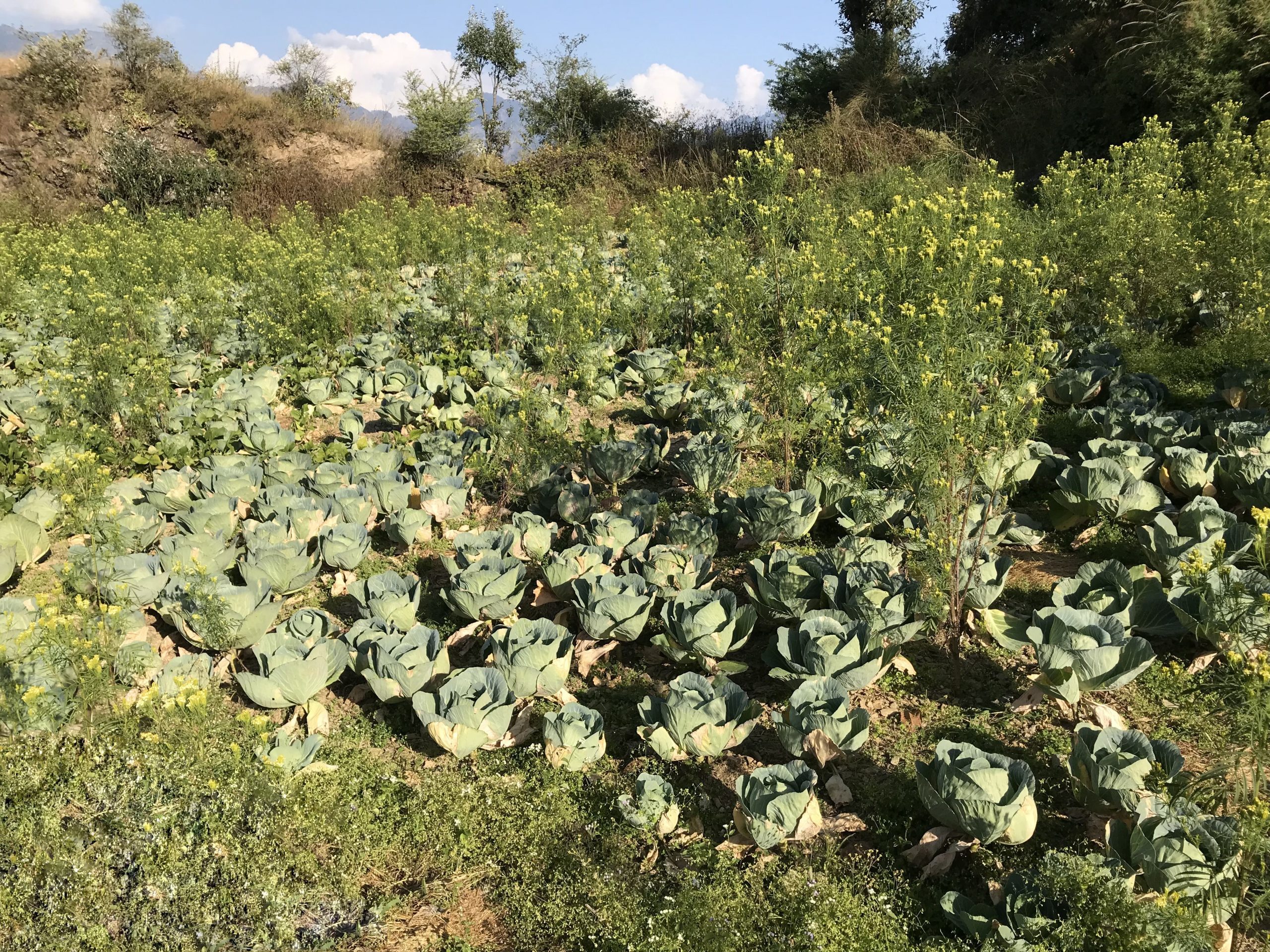Tagetes Essential Oil
What is Tagetes?
Tagetes, known also as Marigolds or wild Marigolds, are a species of mostly herbaceous plants and are a part of the sunflower family. The name Marigold is shared with a similar European plant, Calendula officinalis, which is generally known as the common Marigold. The Tagetes plants are native to the Americas: specifically, the high-altitude regions of countries like Argentina, Peru, Bolivia, Chile and Paraguay. Since the Spanish colonisation of the Americas, Tagetes has become naturalised and widely available in Europe, Africa, Asia and Oceania.
There are three popular subspecies of Tagetes, those being Tagetes erecta (African marigold), Tagetes patula (French marigold) and Tagetes minuta (wild marigold). In total however, there are more than 40 subspecies of Tagetes.
 Image: Looking down on Himalayan Tagetes fields
Image: Looking down on Himalayan Tagetes fields
Where does Tagetes come from?
Our partner in the Himalayas have a wealth of experience in cultivating Tagetes oil, with plantations located on the scenic Himalayan mountains at an altitude of between 1000-2500 metres above sea level. Here, they occupy large plantation spaces across the Western Himalayas, where they grow Tagetes as well as other aromatic crops.
There is a distinct difference between altitude produced Tagetes and Egyptian type Tagetes. The high growing conditions lead to higher levels of minor ketones giving a greater depth of notes.

Image: High altitude Himalayan Tagetes fields maintained by our producer
How is Tagetes oil made?
When the flowers of the Tagetes plants are about to mature they are hand harvested as, at this stage of germination, they are said to retain the best quality oil. The distillation of the oils will occur at one of 15 field distillation units that have been set up around the plantations.
Roughly 7-10 tonnes of Tagetes oil is produced by our partner every year. Local farming families will collaborate and help in the process of growing and harvesting crops during the harvest period (end of October-November). This has helped to create a sustainable economic infrastructure that supports more than 300 working families.
 Image: Harvest time for Tagetes
Image: Harvest time for Tagetes
Uses and other information
In some areas, Tagetes minuta is considered an invasive plant due to the ease with which the plants grow each year, either by the seeds from the previous year or by the stems which regrow from the existing stumps. Due to Tagetes’ preference to acidic soil, it is said to have an affinity with waste sites and has the ability to colonise waste ground.
A lot of species of Tagetes are said to have a pungent, musky scent, although some varieties are purposefully scentless. Tagetes minuta is most commonly used as a source of essential oil and perfumery. It also finds use as a flavourant in food and tobacco, most recently as an unusual flavour for ice cream.
Because of their characteristic aroma, Tagetes plants act as a deterrent for insect pests. It also acts as a repellent to monkeys, so farmers will grow it around their vegetable fields to deter monkeys from destroying their crops. Hence, Tagetes are often used for ‘companion planting’ for food crops like tomatoes, potatoes and chilli peppers.

Image: Tagetes being used as a companion plant to protect cauliflowers
Sample Request
All of our oils are available as samples, enabling you to see for yourself how they vary and what suits your use best. For sample requests, please email us at: samplerequest@khushing.com.
We regret that we can only sample bona-fide companies. If you are a smaller entity, then you are welcome to visit our Oxfordshire laboratory to see the oils first hand.
For any further questions please do call us on: (+44) 1993 882883
If you are interested in more, why not have a look at last October’s Product of the Month: CBD Essential Oil.
